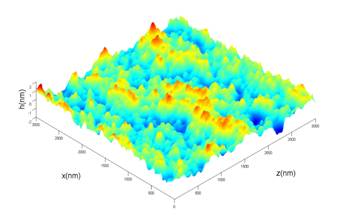Rechercher
Accueil > La Recherche > Axes & Equipes > Matière Molle & Verres > Equipe : Physique des Verres > Thème : Nanophysique des surfaces des verres
Morphology of glass surfaces
publié le , mis à jour le
Involved researchers : M. Ciccotti, M. George, F. Lechenault, G. Pallarès
(Collaboration E. Bauchaud, C. Rountree, D. Bonamy – CEA Saclay)
Morphology of polished glass surfaces or of fracture surfaces can be studied by AFM to understand the physics and chemistry of the mechanisms of damaging (by polishing or by crack propagation). The morphologies of these surfaces can contain relevant information either on the polishing process and the surface and sub-surface damage it can induce or on the dynamics of crack propagation and on the traces of inelastic processes or of the corrosion at the crack surfaces. Rather than pure RMS roughness, the whole statistical properties of the topography are being analysed. However, this requires extreme care since the relevant information is at the nanometre scale where the metrology of AFM imaging is affected by several delicate problems such as drifts, feedback effects, noise and tip shape artefacts.









